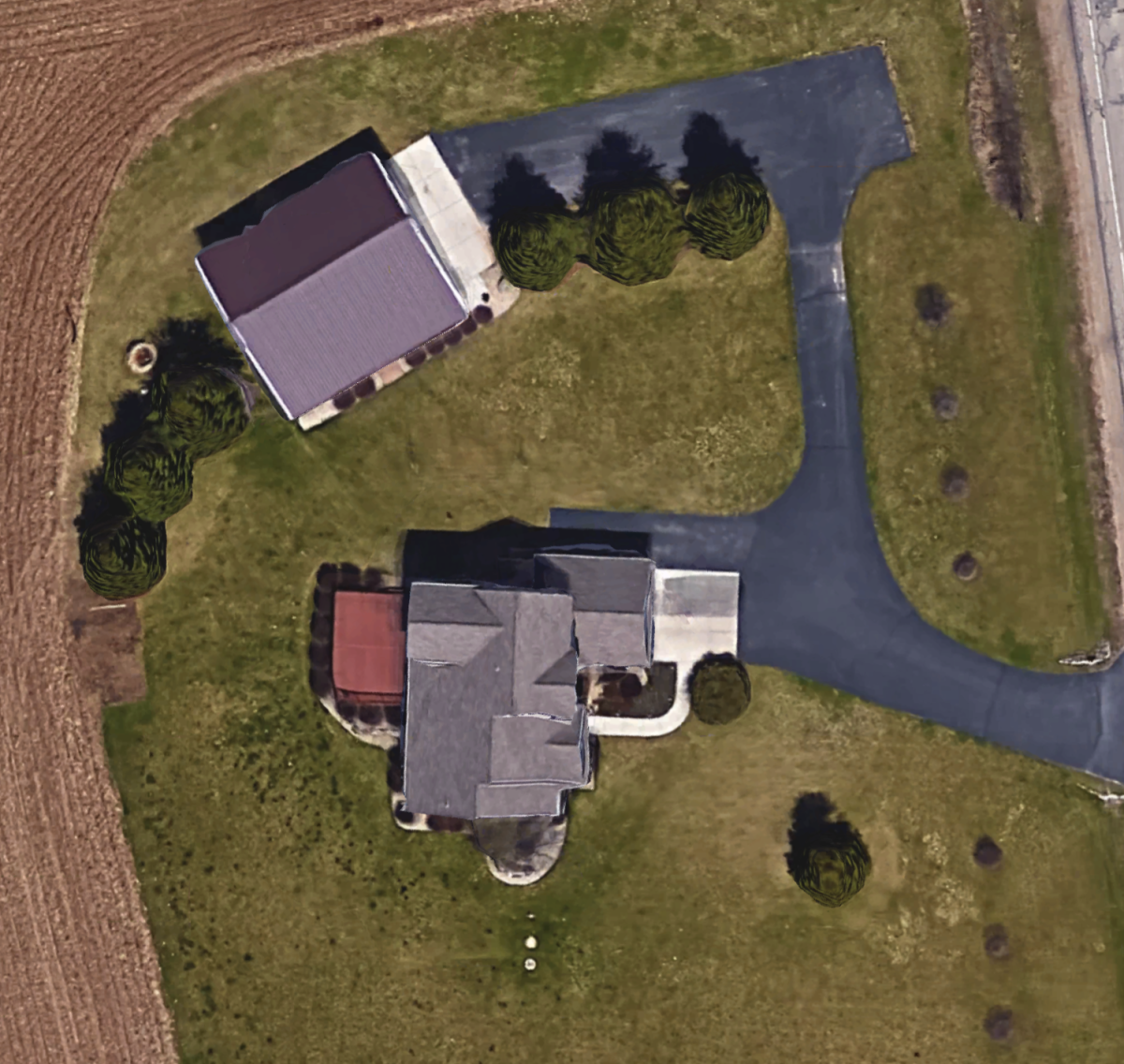Have two electric meters on your property? Thinking of getting a second meter for a new outbuilding? Here is what you need to know about going solar with two meters.
For customers of MG&E and Alliant, as well as some local utility companies, a property would ideally have one meter when going solar. With one meter, you can save more money when going solar and offset more of your annual electricity use with solar power.
Here is an example of a typical two-meter situation: the house is on one meter, a large outbuilding on another meter, and the homeowner wants to go solar. They use 1000 kWh per month in the house, 500 kWh per month in the outbuilding, and ideally want a solar array that produces 1500 kWh per month to minimize the electrical bill and offset all their electricity needs. The outbuilding has a lot of unshaded southern-facing roof space and would be the ideal location for a solar array to power both their home and outbuilding.
Unfortunately, there are a few factors that need to be considered when adding solar to a property that has two meters:
-
A solar array can only be tied into one meter. The electricity produced by a solar array cannot be split into two lines running to different electrical meters.
-
Each meter is billed separately then combined. When a property has two meters, it is easiest to think of it as two totally separate properties put together on the same bill. When a solar array produces more electricity than is immediately used, kWh overproduction credits are credited to the meter the solar array is connected to, not all the meters on the same bill. In our example scenario, with a solar array on the outbuilding producing 1500 kWh a month, the 1500 kWh a month in electricity production would only be applied to the account of the outbuilding that uses 500 kWh a month, not to the total required by the whole property. There is no way to rollover or transfer the kWh overproduction credits to the other meter on the same bill.
-
Net metering and buyback rates mean two meters lead to poor economic returns. For customers of Alliant, at the end of the month, the utility buys back any excess energy production at the wholesale rate, which is about a third of the customer electricity rate. So, to return to our example, if a solar array on the outbuilding is producing 1500 kWh and the outbuilding is only consuming 500 kWh a month, the 1000 kWh overproduction on the outbuilding meter will be bought back by the utility at about 1/3 the consumer rate. At the same time, the 1000 kWh of electricity consumption for your home on the other meter will be purchased at the full consumer rate. For customers of MG&E, the overproduction would roll over from month-to-month in the outbuilding meter’s account for the first 12 months, when MG&E would then see that meter is measuring more electricity production than is needed in a 12-month period. At that point, MG&E would switch that meter’s account to “net producer” status, where the utility buys back any energy that is not immediately used at the lower wholesale rate. All of our systems connected to MG&E are designed never to go into “net producer” status since it is economically disadvantageous for the homeowner. With Alliant and MG&E, overproduction on one meter is purchased back at the significantly lower wholesale rate, rather than applied to the electricity demand on the second meter, meaning two meters is economically disadvantageous when going solar.
-
Utility rules may stipulate where the solar array must be interconnected. Returning to our example, it seems that one option would be to install a solar array that produces 1000 kWh a month on the large outbuilding and connect it to the house meter, since the home consumes 1000 kWh a month. Unfortunately, with Alliant, an array on one building cannot be tied into a meter on another building if the two buildings are on separate meters. With MG&E, you can put an array on an outbuilding and tie it into the meter on your home, even if they are on separate meters, but the cost of the work to run electrical lines from the outbuilding to the house would be better spent on combining both buildings on one meter rather than pulling electricity production off one building and running it into the other.
Due to billing structures and utility rules, there are no easy ways to offset the electricity use for the whole property and maximize economic benefits of going solar if the property has two meters.
If you already have two meters, and want to offset all your electricity use, there are three options:
- Hire an electrician to consolidate your property down to one meter. The cost will depend on the location of your buildings and meters, but will likely total a few thousand dollars. Fortunately, by offsetting more of your property’s electricity use with solar energy, the cost of consolidating to one meter will pay for itself over time. This is our recommendation for most properties.
- Install one array on the building that uses the most electricity on your property. If your home uses the majority of your property’s electricity use and your outbuilding uses a comparatively small amount, then it may make sense to forgo going down to one meter and install one array on your home and attach it to your home’s meter. The converse is true if your outbuilding uses much more electricity than your home.
- Install two solar arrays, one connected to each of your two meters. This option makes sense if both your home and your outbuilding have significant electricity needs. In that case, a single array on either your home or outbuilding may not be enough to offset the electricity use for your whole property and installing two arrays, one connected to each meter, would be the right choice.
WE Energies customer with two meters? You may be in luck. WE Energies allows kWh credits to roll over from one meter to another, as long as three qualifications are met: (1) the same customer’s name is on the bill for both meters, (2) both meters have the same consumption rate structure and the same voltage, and (3) both meters are fed by the same transformer. Wondering if the meters on your property meet these qualifications? We’re happy to help you find out.
If you are considering adding a second meter for a new outbuilding, we would recommend putting your new outbuilding on the same meter as your home. If you have two meters already, we would be happy to recommend the best option for your property to get the most benefit from going solar.

